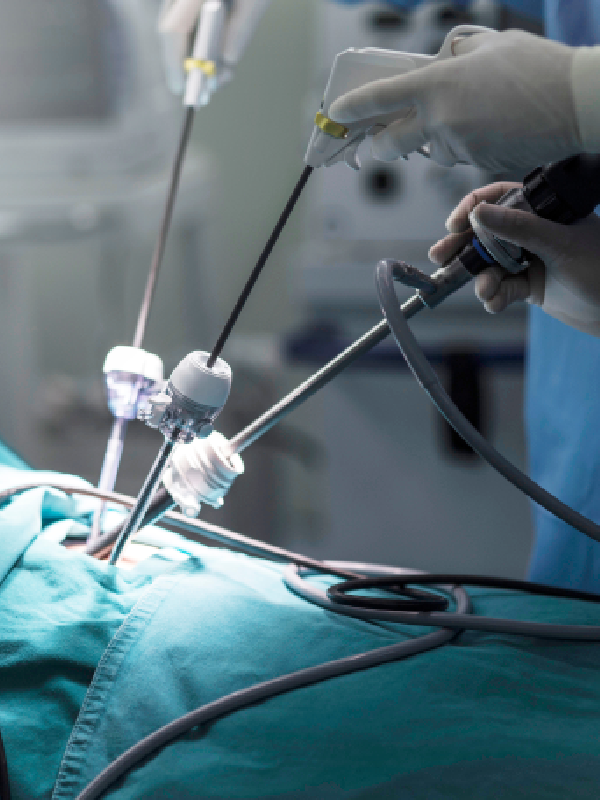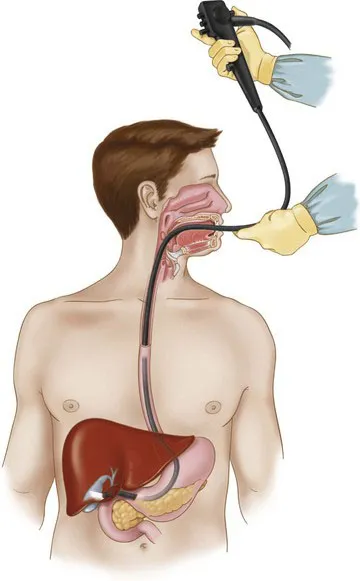General & Laparoscopic Surgery in Dubai
General and Laparoscopic Surgery in Dubai
General surgery is a surgical specialty that focuses on abdominal organs, including the esophagus, stomach, small bowel, colon, liver, pancreas, gallbladder, and bile ducts, among others. General surgeons also deal with diseases involving the skin, breast, soft tissue, and hernias.
Laparoscopic surgery, also known as minimally invasive surgery, is a modern surgical technique in which operations are performed through small incisions (usually 0.5-1.5 cm) as opposed to the larger incisions needed in traditional surgical procedures. This approach typically results in faster recovery times, less pain, and smaller scars for patients compared to open surgery.
General surgeons often perform both traditional open surgeries and laparoscopic surgeries, depending on the specific needs of the patient and the nature of the condition being treated. Laparoscopic surgery is increasingly preferred for many procedures due to its benefits for patients, but not all surgeries can be performed laparoscopically.
BEST LAPAROSCOPIC SURGEONS IN DUBAI
Experts in advanced laparoscopic surgeries
We are renowned experts in advanced laparoscopic surgery in Dubai, specializing in minimally invasive approaches to diagnose and treat various abdominal conditions. Dr. Rohit Kumar and Dr. Amna Bhatti, the best Indian general surgeons in Dubai, lead our team, offering specialized procedures such as laparoscopic hernia surgery and the intragastric balloon procedure.
Our laparoscopic surgery services in Dubai are known for their safety and shorter recovery times compared to traditional open surgery. We excel in treating inflamed appendixes, gallbladders with gallstones, and a variety of hernias including inguinal, femoral, and ventral hernias.
With our team of highly qualified surgeons trained in laparoscopic techniques, we ensure optimal outcomes and personalized care for every patient. Trust Dr. Rohit Kumar and Dr. Amna Bhatti for your laparoscopic surgery needs in Dubai, where innovation and expertise converge to deliver exceptional healthcare.
The procedure
The laparoscope is a small video camera inserted through a small incision in the abdominal wall. This allows the surgeon to see inside the abdomen on a video monitor. Laparoscopy surgery can be done using standard laparoscopic equipment. Guide wires and catheters may also be used during laparoscopy surgery. These thin tubes help the surgeon navigate the abdominal cavity and organs.
The laparoscopy procedure requires several small incisions in the abdominal area. A laparoscope, a long, thin tube with a light and camera on end, is inserted through one of these incisions. The laparoscope transmits images of the inside of your abdomen to a video screen, where your surgeon can see them. Other ports that we make through 2 or more incisions on the abdomen are used as the surgeon’s hands through which he performs the surgery using various equipment.
Conditions treated
Laparoscopic surgery is often used to treat digestive system conditions like gallstones, inflamed appendix, abdominal wall hernias, hiatus hernias, and weight loss surgeries. The recovery from laparoscopic surgery is typically quicker and less painful than traditional open surgery, with most people being able to return home the same day or the next day. All keyholes are closed using absorbable stitches covered with a water-proof dressing so that the patient does not experience any discomfort.
Recovery in laparoscopy surgery & Aftercare
Most of the laparoscopic procedures performed are done as daycare cases, where the patient leaves the hospital the same day, pain-free.
Following your surgeon’s instructions for care after laparoscopic surgery is important. Your surgeon will allow you to resume daily activities based on the treated condition. For example, if you underwent a hernia procedure via placing a mesh, you need to avoid ensuring a quick and successful recovery.
Immediately after laparoscopy
You are kept under observation post-anesthesia till you are completely awake in the recovery room. After the doctor assesses your stability and alertness, you are moved to the hospital room. You may be allowed to go home after a few hours if it is an outpatient procedure. It is best to have someone assist you as no stress should be induced after the procedure.
Mobilization is one of the tools for quick recovery. The doctor will prescribe you some oral pills, including antibiotics and painkillers, as needed to be safely taken at home.
Diet and Activity
A laparoscopic surgical procedure doesn’t have any dietary restrictions. You can consume light yet solid foods and continue with the same after the process.
Laparoscopic bariatric surgery will have dietary restrictions. You will be asked to be on a clear fluids diet for four weeks or as suggested by the surgeon. You can move to a solid diet, but only as instructed by the doctor. All the dietary instructions in case of bariatric surgery are planned and discussed with the patient well in advance. This allows you to better prepare for the procedure and the recovery both.
Risk stratification
Most of the time, we address high-risk patients who are consulting for a bariatric procedure, wherein we involve our cardiologist, physician, and anesthetist to evaluate them for the particular risk, and they are taken up for surgery after the clearance of all the doctors treating them.
The invention of Laparoscopy Surgeries
In 1895, Georg Kelling performed the first endoscopic examination on humans. He used an endoscope of his design to visualise the interior of the bladder via the urethra. Seven years later, in 1902, Anton Brill and Hans Christian Jacobaeus performed the first pneumoperitoneum for diagnostic purposes. They injected carbon dioxide into the abdomen through a Veress needle and inserted a cystoscope through a small incision to examine the interior of the belly. These pioneers laid the foundation for one of the most significant advances in surgical history: laparoscopic surgery.
The first successful laparoscopic surgery was performed in 1917 by Kussmaul and Schloffer, who used a Laparoscope to remove a kidney ball from a patient with renal tuberculosis. It wasn’t until 1948, however, that Gerhard Buess entirely performed the first successful surgery through abdominal wall punctures (i.e., trocar insertion). He removed an ovarian cyst from a patient using only 2 5-mm incisions: 1 for a telescope and 1 for a dissector. The laparoscopy techniques evolved with time, and today, we are in an era where the surgery is robot-assisted. Artificial intelligence and augmented reality are the way forward in surgeries, and laparoscopy will only improve patients’ experience and recover faster.


NOTES (Natural Orifice Transluminal Endoscopic Surgery)
NOTES is a minimally invasive surgery that has revolutionised the medical industry. This technique allows surgeons to operate through small incisions, which results in less pain and scarring for patients. NOTES was first developed in the early 1900s but did not gain widespread popularity until the late 1990s. Since then, NOTES has undergone significant evolution. The most important advance has been the development of single-port or natural Orifice surgery, a NOTES technique that uses only one small incision. This type of surgery is less invasive and has many benefits for patients. In addition, new robotic surgery techniques have made NOTES more precise and safer. As NOTES continue to evolve, more patients will likely benefit from this minimally invasive technique.
Laparoscopic advanced gastric surgery procedures are usually performed to treat patients who are struggling with obesity. These procedures work by changing the stomach and intestines, reducing the amount of food a person can eat and how much they absorb from what they eat.
Commonly performed surgical procedures are laparoscopic appendectomy, laparoscopic cholecystectomy, hernia mesh repair, and hiatus hernia repair. We also perform bariatric surgeries, including laparoscopic sleeve gastrectomy, laparoscopic mini gastric bypass, etc.
